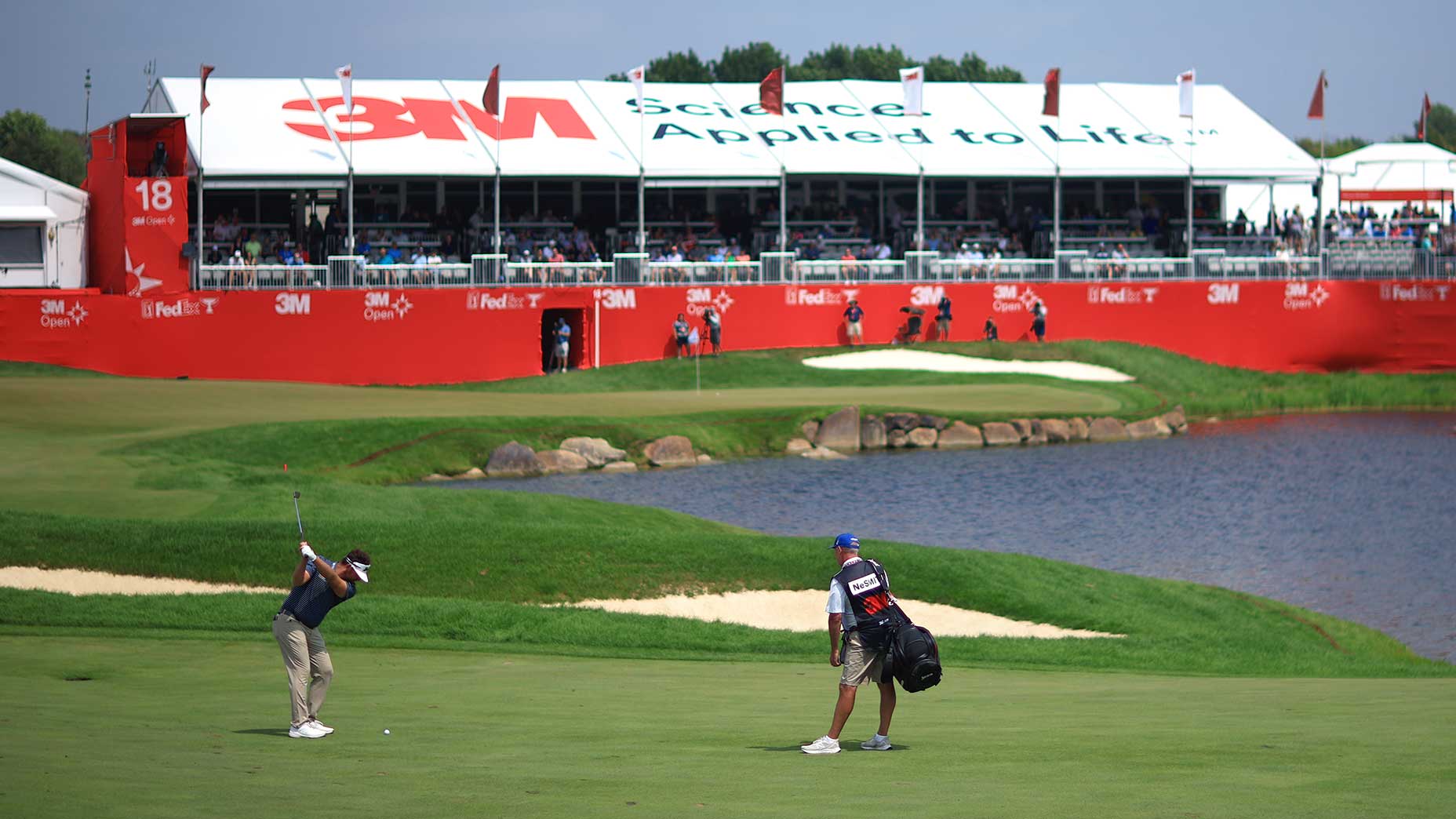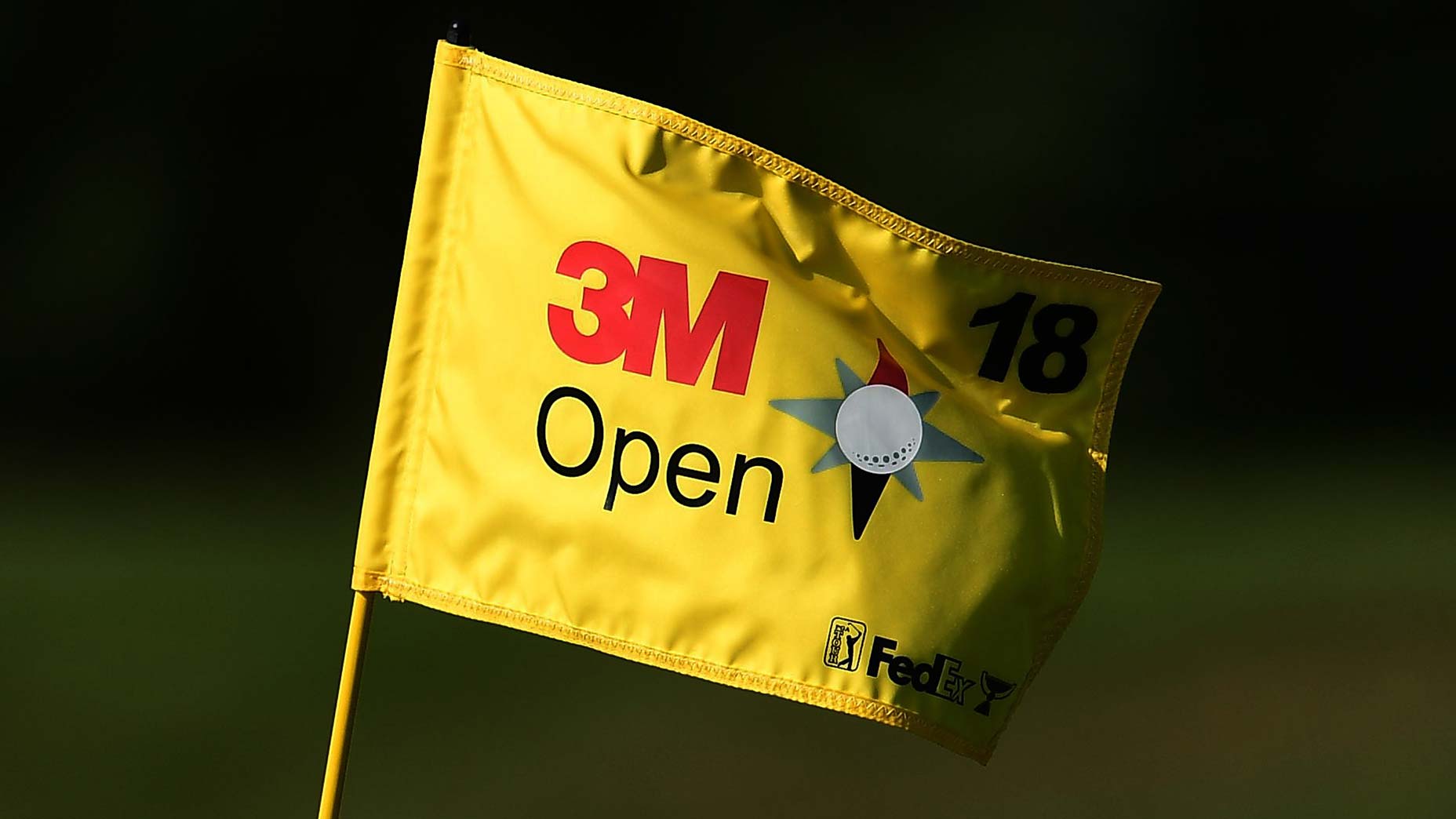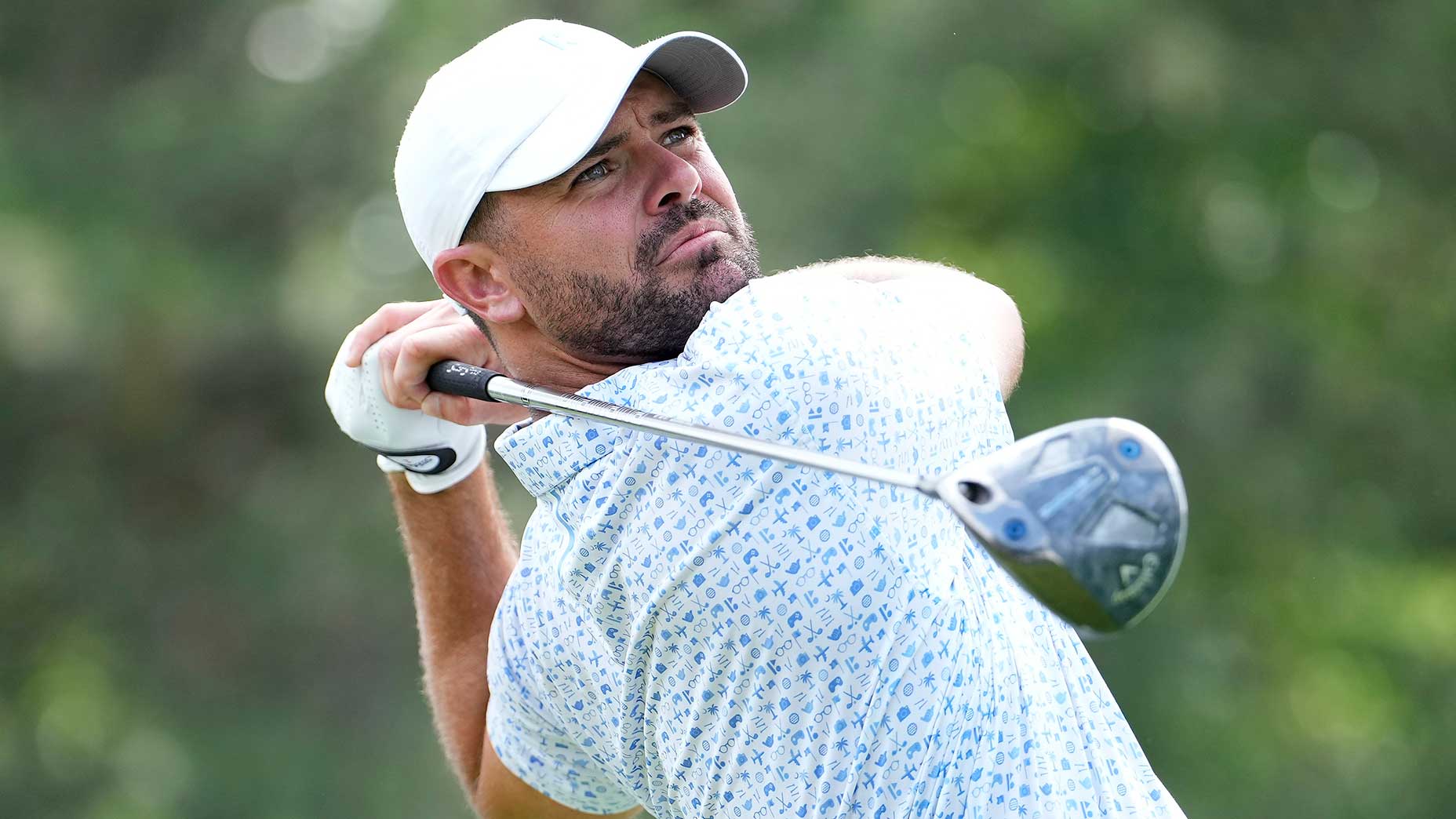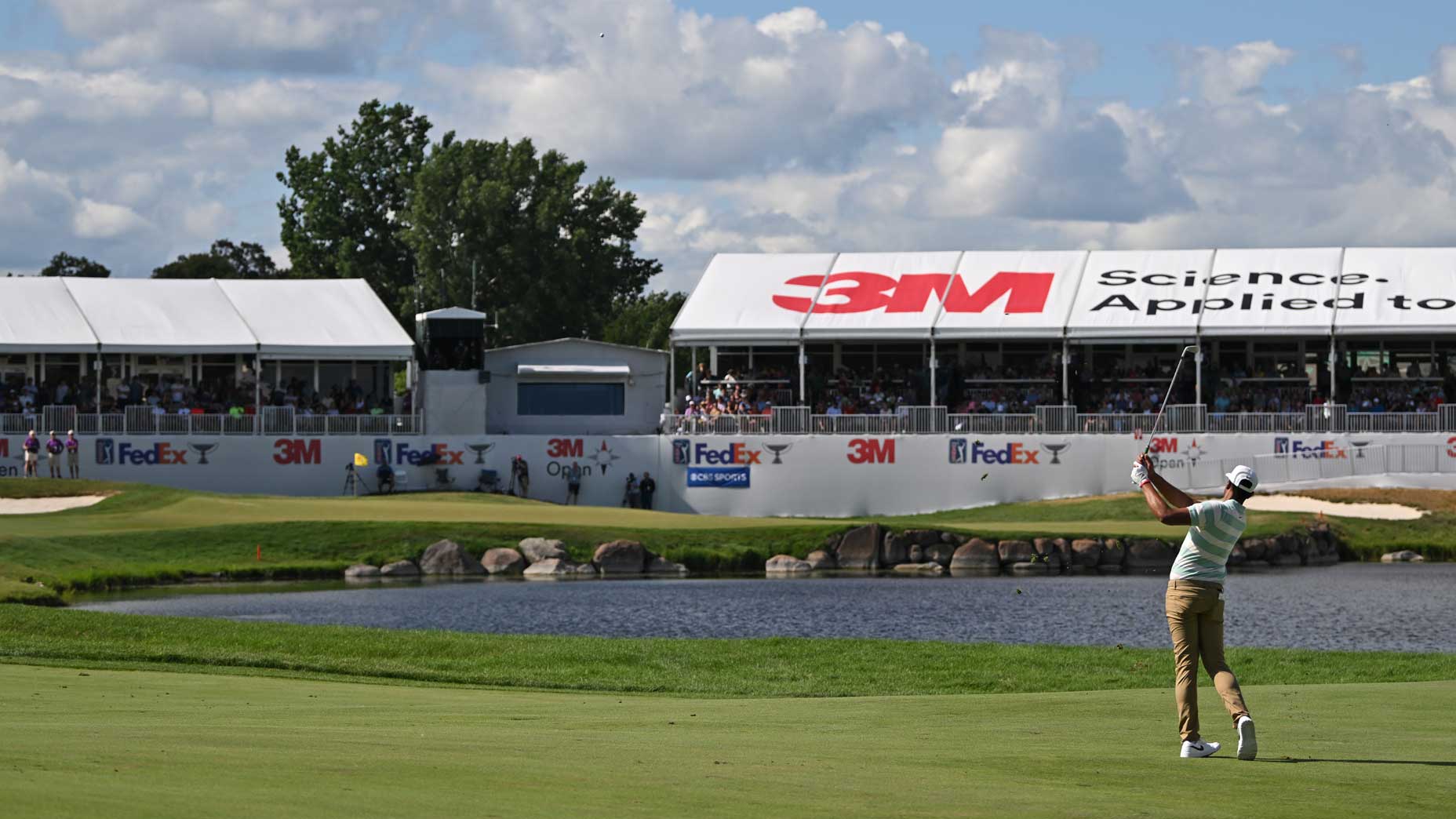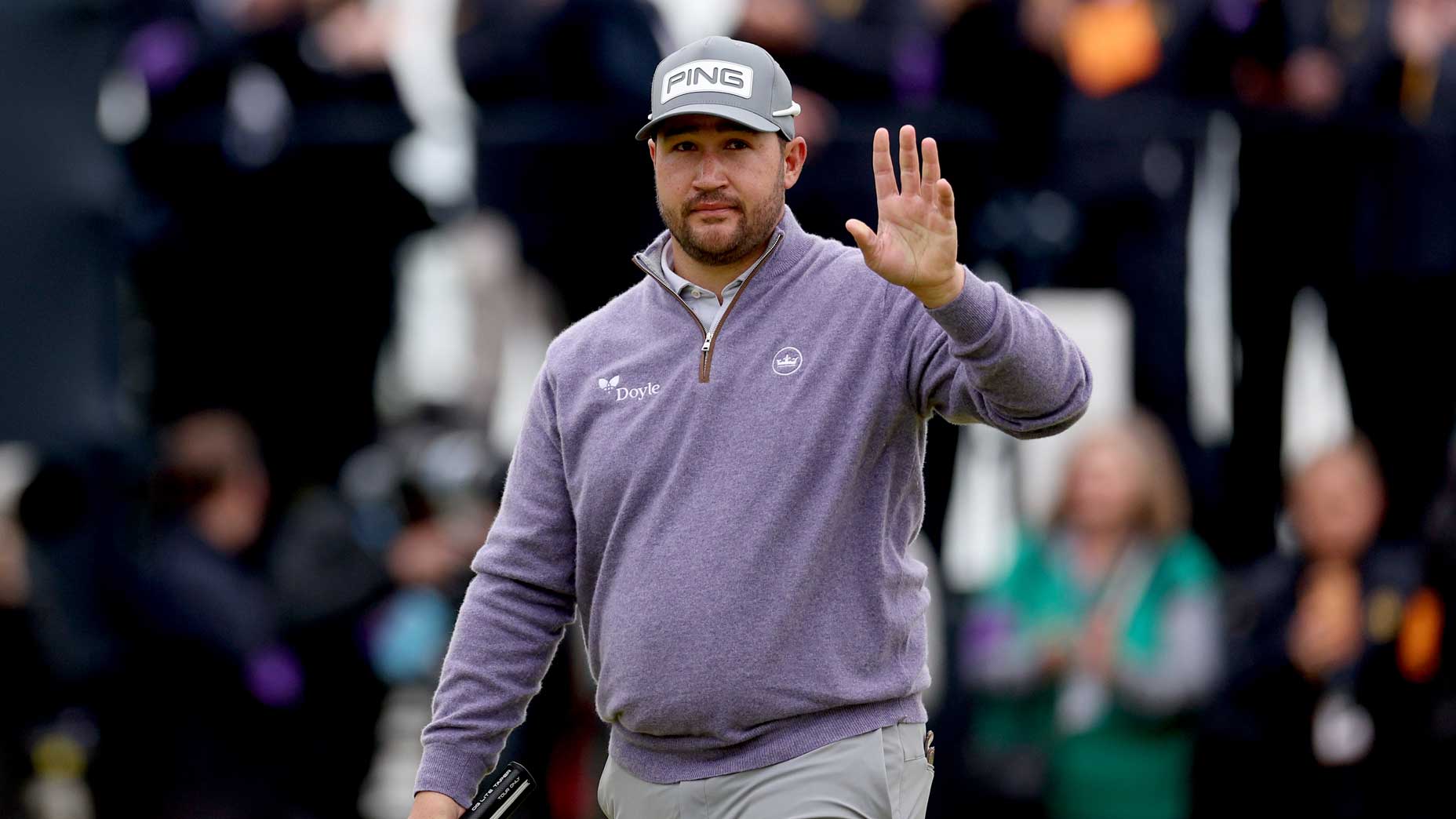Pro golf is calling for a global tour. But what does that look like?

Rory McIlroy hits a tee shot against the skyline of Dubai's Marina district.
Getty Images
DUBAI — There’s plenty to look at from the back of the driving range here at the Dubai Desert Classic. For one, there are the divots of lush, green grass flying off the prettiest golf swings on the planet. And behind them, one of the most iconic skylines in the world — the Dubai Marina district and its many, many skyscrapers, which loom over every image of this tournament.
At the base of that skyline is a massive, black wall sporting a map of the world outlined in yellow. On the map are 45 numbered circles, one for each of the 45 locations of tournaments on the DP World Tour. Nos. 1 and 3 are in Australia while 2, 4 and 5 are in South Africa. There are four dots in the United States, five in the United Kingdom and five more here, in a much different place, the United Arab Emirates.
Next to all of that, four words protruded from the sign in bold, white lettering:
“A TRULY GLOBAL TOUR”
Ahhh — so it does exist!
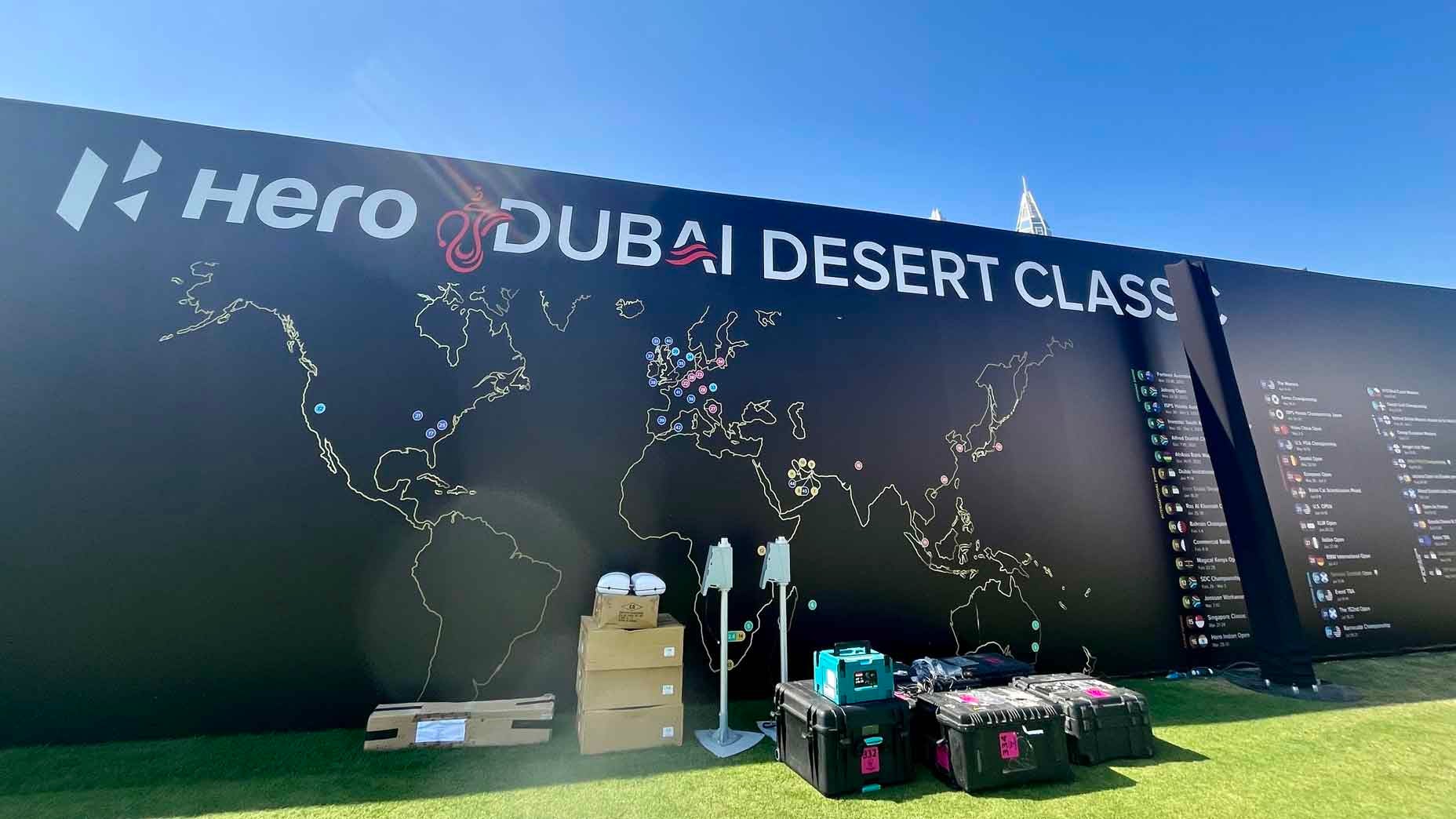
Prudent golf fans who follow the quotes and the money and the decisions of the game’s leaders would have you believe that a truly global tour doesn’t exist. The next step for pro golf in the age of PGA Tour/LIV peace, they say, is the creation of a tour spanning timezones and continents and hemispheres. Technically, they’d be wrong, as evidenced by the DP World Tour’s clever tournament signage, but figuratively they’d be right. Because many of the game’s biggest names discuss the idea of a truly global tour as something the sport doesn’t have. At least not yet.
Just last week, Rory McIlroy shared his dream for the future of the pro game: a globetrotting schedule for golf’s most elite players which spends the majority of its time tapping the dominant American market, but also visits the Far East, the Middle East, Australia, Singapore, etc.
“I think if we really want to,” McIlroy said, “if everyone is talking about growing the game, especially if these investors are going to come into our game and they want a return on their capital, I think everyone needs to start thinking more globally around it. But globally in a holistic way, not like this tour, that tour and another tour.”
The complexities of McIlroy’s “dream” didn’t get litigated during that press conference, but they were illustrated at an intimate gathering Tuesday between outgoing DP World Tour chief Keith Pelley and a gaggle of reporters. Pelley is bound for Toronto, where he hails from, to become the CEO of Maple Leaf Sports and Entertainment, but not before April 2, and certainly not before the next couple of months provide a clearer picture of how the game’s leading tours chart a future either with or without billions of dollars from the Saudi Public Investment Fund. Asked simply about what he would like to see moving forward, Pelley was prescriptive.
“I think the growth of the game is global. I think that’s where the focus needs to be,” he said. “I think with the emergence of [Fenway Sports Group], which owns Liverpool, you know, they understand the importance of global. PIF certainly understands the importance of being global. This is a global game. Every business now that is growing wants to be global. You see that here in Dubai. You saw that last week with the Dubai Invitational. I think for me, what I would like to see is the game becoming unified with a global strategy.”
Global, global, global. Pelley used that terminology relentlessly during the 40-minute sitdown — 18 times in total — but an interesting turn came from the immediate follow-up question.
Does the PGA Tour view it that way, too?
“I think the PGA Tour is coming to the realization that globality is the key for growth,” he said. “They have heard me say it once or twice.”
That last part may have been a touch sarcastic, but his tone was serious. Pro golf’s global future depends greatly on how much the PGA Tour embraces the look of a dotted map on the back of a driving range. This week’s event is being played for the 35th time in Dubai, a city whose population has grown by nearly 700 percent since the tournament was founded in 1989. What was once a single Arabian spot on the calendar has now become the site of the DP World Tour’s second headquarters. And why not? Dubai is one of just nine cities to earn the distinction of Alpha+ (or higher) from the Globalization and World Rankings Research Institute, a metric that attempts to rank cities by their impact on the global economy. Dubai is a travel pipeline between continents and a financial hub for international trade. It charges no income tax, which makes it particularly attractive to pro golfers, who are more than happy to find residency where they will be taxed the least. (The same reason pro golfers born and raised in California find themselves buying houses in Nevada, Florida or Texas.)
Where pro golfers play and how much they play for are perhaps the two most important questions of the job for golf tour CEOs like Pelley. He views it as one of the highlights of his tenure that 10 golfers from the DP World Tour now have full status on the PGA Tour each year.
“[I went] back-and-forth last night with Matthieu Pavon,” Pelley noted, “who finished seventh in his first tournament and won a quarter of a million. And he says, ‘Thanks, Boss.’” A frenchman earned a huge paycheck on an island in the middle of the Pacific Ocean thanks to status he received after great performances in Spain, Dubai and South Africa. No wonder Pelley had a twinkle in his eye.
It’s likely Pelley’s term will be remembered most for the strategic alliance he signed with the PGA Tour, ultimately sacrificing a percentage of his tour for greater financial stability, but it was far from the only agreement he made with global intentions. There was a separate strategic alliance signed with the PGA of Australasia. And one with the Korean PGA, too. A week ago the DPWT signed another agreement with the China Golf Association. The building blocks for global connectivity.
Pelley was on the short list of executives who pushed the Ryder Cup to Rome, Italy for the first time, bringing golf’s most beloved match play event to one of the cultural capitals of the world. That decision proved as controversial as it was simple. The price was right, with promises from various Italian bodies to invest more than $100 million over the course of a decade. On Tuesday Pelley called it, “the greatest Ryder Cup ever,” — an iteration that elevated the Cup “to another level.”
In many ways, he had to be right.


